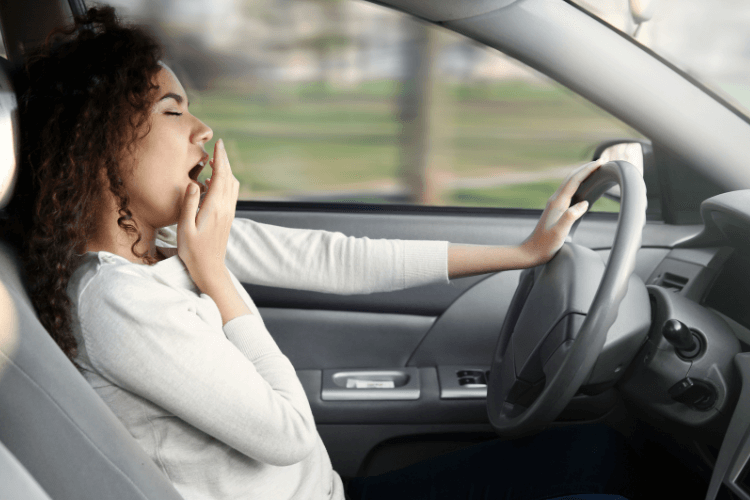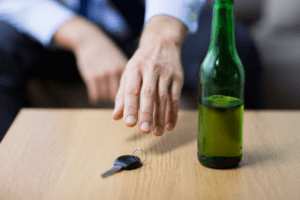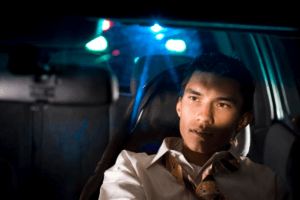
All drivers owe everyone else on the road a legal obligation to follow traffic laws and refrain from unsafe driving behavior. Drowsy and drunk drivers neglect this obligation. When that negligence causes others harm, the resulting injured parties have the right to hold those irresponsible drivers accountable. The drunk driving accident lawyers at The Krist Law Firm, P.C. are here to help victims secure just compensation for their losses.
Drowsy Driving Explained
A vehicle operator engages in “drowsy driving” when they drive while sleepy. They may be tired from a lack of sleep or may have taken medication with a drowsiness side effect. Both prescription and over-the-counter medications can prompt this reaction.
Whatever the cause, drowsy driving is dangerous. When exhaustion takes over, drivers can fall asleep at the wheel. Even if they do not close their eyes completely, tired drivers do not have the capacity to drive safely. The Centers for Disease Control and Prevention (CDC) states drowsy drivers:
- Have diminished ability to pay attention to the road
- Experience slowed reaction times – they cannot carry out sudden braking or steering maneuvers required in emergency or “close-call” situations
- Are less able to make good driving decisions
Some drowsy drivers try to mitigate their sleepiness with coffee and energy drinks, but these solutions are only temporary and still leave the driver at risk of causing harm. The combination of sleep deprivation and caffeine can cause “microsleeps,” or what the National Highway Traffic Safety Administration (NHTSA) defines as “brief losses of consciousness that can last for four or five seconds.” During that brief span, drivers moving at 55 MPH can travel 100 yards – long enough to have a car crash.
This hazard is compounded if the negligent driver is behind the wheel of a tractor-trailer. The Federal Motor Carrier Safety Administration (FMCSA) governs all things related to commercial driving. Because drowsy driving is so dangerous, FMCSA has established regulations drivers must adhere to, limiting on-duty hours and mandating rest periods.
Drunk Driving Explained

Even in states with a .08% BAC standard, drivers who show signs of impairment but measure lower BACs can be charged with driving while impaired. NHTSA provides a general summary of how different BACs may affect driving ability. Drivers with a BAC of:
- .02% have diminished visual capabilities and reduced ability to do two tasks at the same time.
- .05% show diminished coordination, lowered ability to track objects, and issues responding to emergency situations.
- .08% have problems with concentration, short-term memory, controlling speed, and processing information (such as signal detection), and have impaired perception.
- .10% have a diminished ability to stay in their own lane or use brakes appropriately.
- .15% have severe trouble controlling the vehicle, keeping their attention on driving, and processing visual and auditory information.
As with drowsy driving, FMCSA has also instituted specific regulations for commercial drivers and alcohol and other substance use. Commercial drivers are forbidden from driving with any alcohol in their systems and can be charged with DUI and lose their commercial driver’s license (CDL) if they drive with a BAC of .04% or higher.
Drowsy Driving Accident Statistics
Information reported by the National Safety Council (NSC) shows tragic possibilities and realities resulting from drowsy driving. Determining the actual number of drowsy-driving accidents each year is a challenge, as not all drivers will or can admit they were sleepy or asleep at the time of the event.
However, according to the National Safety Council (NSC), 328,000 drowsy-driving accidents occur each year – an estimate exceeding the number reported to police by three times. At least one study showed 109,000 of these car accidents resulted in injuries and 6,400 involved car accident fatalities, though the researchers “suggest the prevalence of drowsy driving fatalities” exceeds reports by 350%.
According to NHTSA numbers reported by the NSC, 684 individuals died in fatal drowsy-driving-related accidents reported to police over the course of a recent year, and the costs of injury and fatality-causing accidents, not including property damage, amounts to $109 billion dollars per year.
Drowsy-Driving Accidents in Texas
Researchers from Value Penguin analyzed data collected by NHTSA over a recent five-year period. The findings put Texas third on the list of states with the highest percentage of fatal drowsy-driving accidents, with a rate of 4.6%.
For context, Wyoming topped the list at 9.6% — about six times the national average — and Maine came in second with a rate of 5.9%. Texas, however, had the highest number of fatalities, 772, of any state during that period. California followed with 225.
Drunk Driving Accident Statistics

Drunk Driving Accidents in Texas
The Texas Department of Transportation (TxDOT) reports 1,162 drunk driving deaths for the most recent full year of data collection available. This number represents a 2% increase from the year prior and equates to three deaths per day – one every seven hours and 32 minutes. During that year, DUI accidents accounted for 26% of all traffic fatalities.
Driving Drowsy vs. Driving Drunk
The effects of driving drowsy vs. driving drunk are not identical but “bear some similarities and are considered equally dangerous,” according to the Sleep Foundation. Both conditions slow reaction times and diminish alertness and decision-making capabilities. More specific comparisons show driving after:
- 18 hours without sleep, which is like driving with a .05% BAC
- 20 hours without sleep, which is like driving with a .08% BAC
- 24 hours without sleep, which is like driving with a 1.0% BAC
Even “mild and short-term sleep deprivation can cause dangerous driving impairments. One study reported by the Sleep Foundation showed that getting six to seven hours of sleep per night doubles the risk of an accident and getting less than five hours doubles that risk again.
Regarding car accident prevalence, the Sleep Foundation states that controlled studies allowing researchers to measure participants’ sleep deprivations showed “drunk and drowsy driving both result in a similar amount of crashes.”
We Will Fight for Every Dollar You Deserve
The Krist Law Firm, P.C. has been fighting for justice for injured Texans for over 40 years, and we are ready to fight for you. If you or someone in your family has been hurt or killed by a drowsy or drunk driver, call or send us a message to arrange a free case review. A Texas drunk driving lawyer from our team will treat you with compassion and respect while fighting fiercely to hold the negligent driver responsible for what their actions have cost you.

